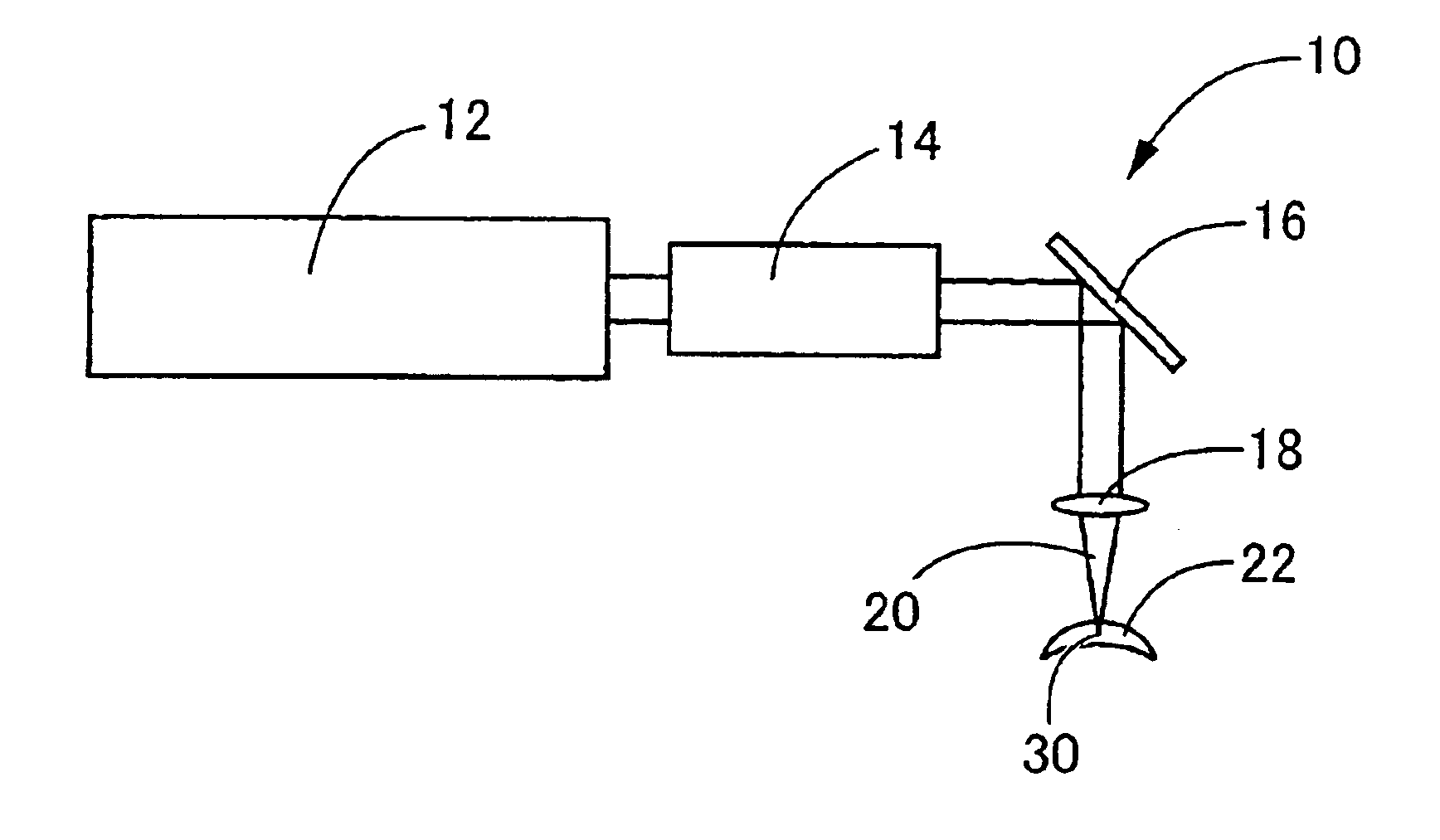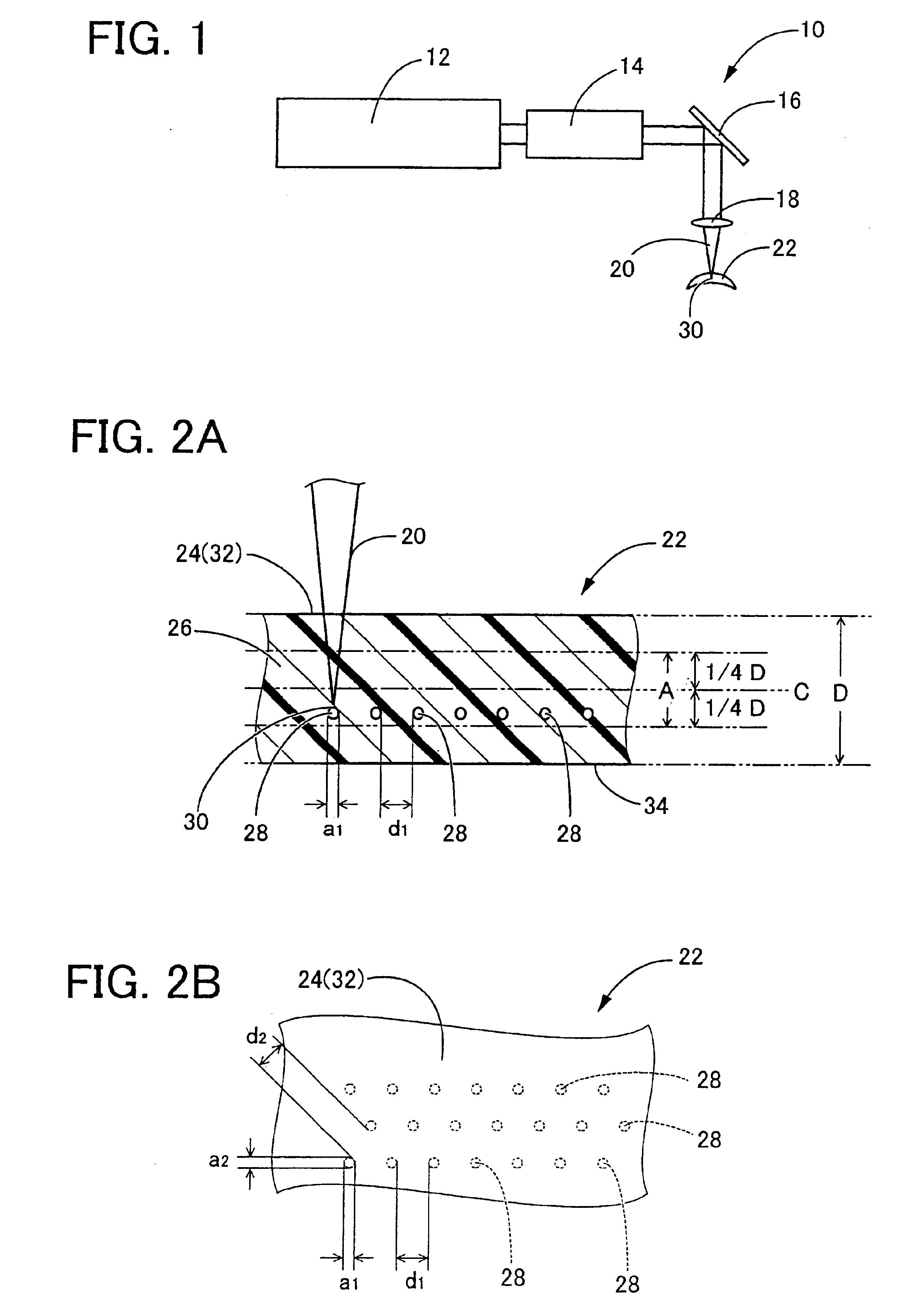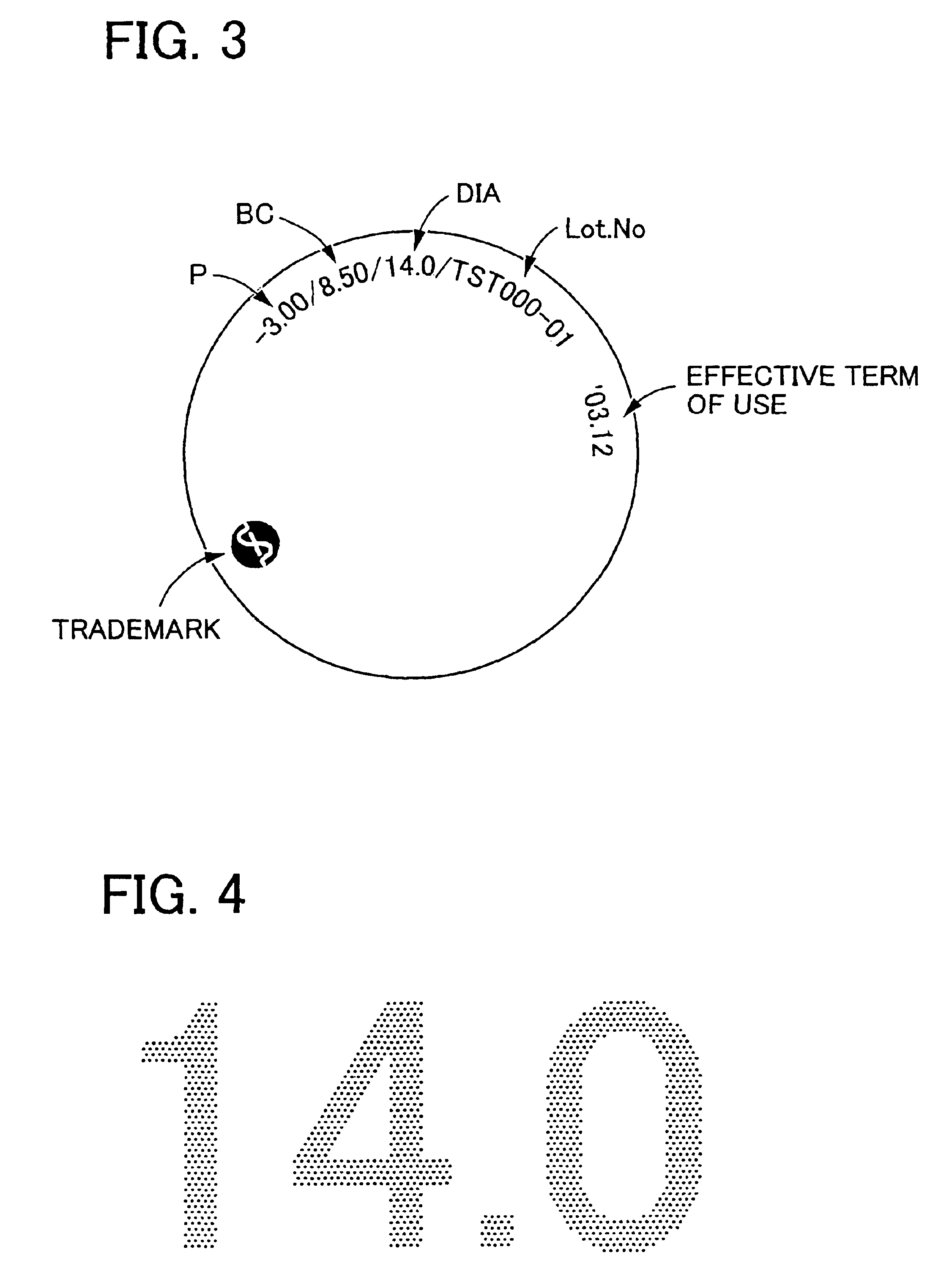Method of marking ophhalmic lens by using laser radiation of femtosecond pulse width
a technology of ophhalmic lens and laser radiation, which is applied in the field of marking an ophhalmic lens, can solve the problems of insufficient safety, increased the number of process steps for marking the ophhalmic lens, and required additional steps, and achieves the effect of easy and clear reading or recognition
- Summary
- Abstract
- Description
- Claims
- Application Information
AI Technical Summary
Benefits of technology
Problems solved by technology
Method used
Image
Examples
examples
There will be described some examples of the present invention to further clarify the present invention. It is to be understood, however, that the present invention is not limited to the details of the following examples.
As the ophthalmic lens to be marked, there were prepared two plates (contact lenses) each having a thickness of 100 μm, by polymerizing a polymerizable composition containing methyl methacrylate and trimethyl silylpropyl methacrylate in a proportion of 50:50 by weight. One of the thus prepared two contact lenses was colored green by adding copper phthalocyanine in an amount of 0.005 wt. % to the polymerizable composition in the polymerization process. As the laser radiation source, a titanium sapphire laser was used.
Each contact lens was positioned on a three-axis piezoelectric actuator such that the laser radiation emitted from the laser radiation source was incident upon a desired portion of the contact lens and such that the laser radiation was focused at a prede...
PUM
| Property | Measurement | Unit |
|---|---|---|
| diameter | aaaaa | aaaaa |
| distance | aaaaa | aaaaa |
| wavelength range | aaaaa | aaaaa |
Abstract
Description
Claims
Application Information
 Login to View More
Login to View More - R&D
- Intellectual Property
- Life Sciences
- Materials
- Tech Scout
- Unparalleled Data Quality
- Higher Quality Content
- 60% Fewer Hallucinations
Browse by: Latest US Patents, China's latest patents, Technical Efficacy Thesaurus, Application Domain, Technology Topic, Popular Technical Reports.
© 2025 PatSnap. All rights reserved.Legal|Privacy policy|Modern Slavery Act Transparency Statement|Sitemap|About US| Contact US: help@patsnap.com



